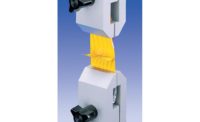I hate paperwork. In fact, I think the only redeeming quality most of it has is the fact that it is combustible and therefore great for starting fires in my fireplace. Many folks share my dislike for it so much they think its spiritual counterpart—electronic data—is better but at least you can use paper for something else.
In thinking about it all, fleetingly I’ll admit, I have concluded it’s the details in things like calibration reports that is the problem, despite the media used to deliver them. It’s those details that can be a source of frustration and that may explain why many calibration reports are quickly scanned for red flags and then filed away. I’ll admit there are some folks who actually study the reports and think about what they may imply. And there are some who go off the deep end with endless analysis but miss the devils in the details. This would be like analyzing the language while missing what was being said.
With calibration reports this happens a lot and it all starts with the word ‘calibration.’ Sending a plug gage to a lab and asking for it to be calibrated without understanding the details of what the lab is going to do for you means you are going to miss some important information from the details that are reported. I have seen labs that take a single measurement in the middle of a plug gage and call it a day. Similarly, I regularly see reports where only two measurements are made, one at each end of the gage. By comparison, any lab worthy of the name will report three diameter measurements over the length of a go gage for example. Let’s look at the results from each lab to see what might be missed.
The one-reading wonder could bless a gage that is small at the front while being large at the rear declaring it to be in the middle of its tolerance. The two-reading lab checking a gage with a large difference between the front and rear readings would declare the gage to be badly tapered. If three readings were taken on this gage with the middle and rear readings about the same a different conclusion would result: the gage is worn at the front end. In the latter case, the gage may not be suitable for checking blind bores but could be used for through bores.
Did the lab put a date on the report indicating when the gage should be calibrated again? If they did, where did that come from? Did you give them that requirement? If the answer is no, it could be based on them looking for future business rather than a metrological necessity. Worse, if it is wrong, you may have to explain why you didn’t follow it if a quality auditor finds it. If the lab is accredited to ISO17025, the standard specifically states that labs should only put due dates on reports if the client indicates what they should be.
How did the lab report their measurement uncertainty? If they didn’t show any, get a new lab. Did they show some ratio of accuracy compared to tolerances on the items calibrated? Ask them to explain what that actually means in real terms, better still, ask them to restate the uncertainty in the same units they show the measurements. This is what is required by ISO17025.
Before you make accept/reject decisions based on a report, you should review the claimed uncertainty. The uncertainty on thread pitch diameter measurements is quite high compared to the tolerances in the standards irrespective of whether we’re talking about a new or a used gage so don’t be alarmed. The tolerances were created long before measurement uncertainty entered the picture. Since that time, a number of studies brought the realization that such measurements were not as precise as believed. Measurement uncertainty gives you an order of magnitude for decision making.
It’s all about physics, technology and procedures so it doesn’t matter if your equipment is rocket powered with lasers and high resolution which means there are limits to dimensional metrology. So, if you require lower uncertainty than what various labs can provide, you may have to get NIST doing your work.
When you have questions as to the meaning behind the numbers from your calibration source, talk to the folks who did the work.


